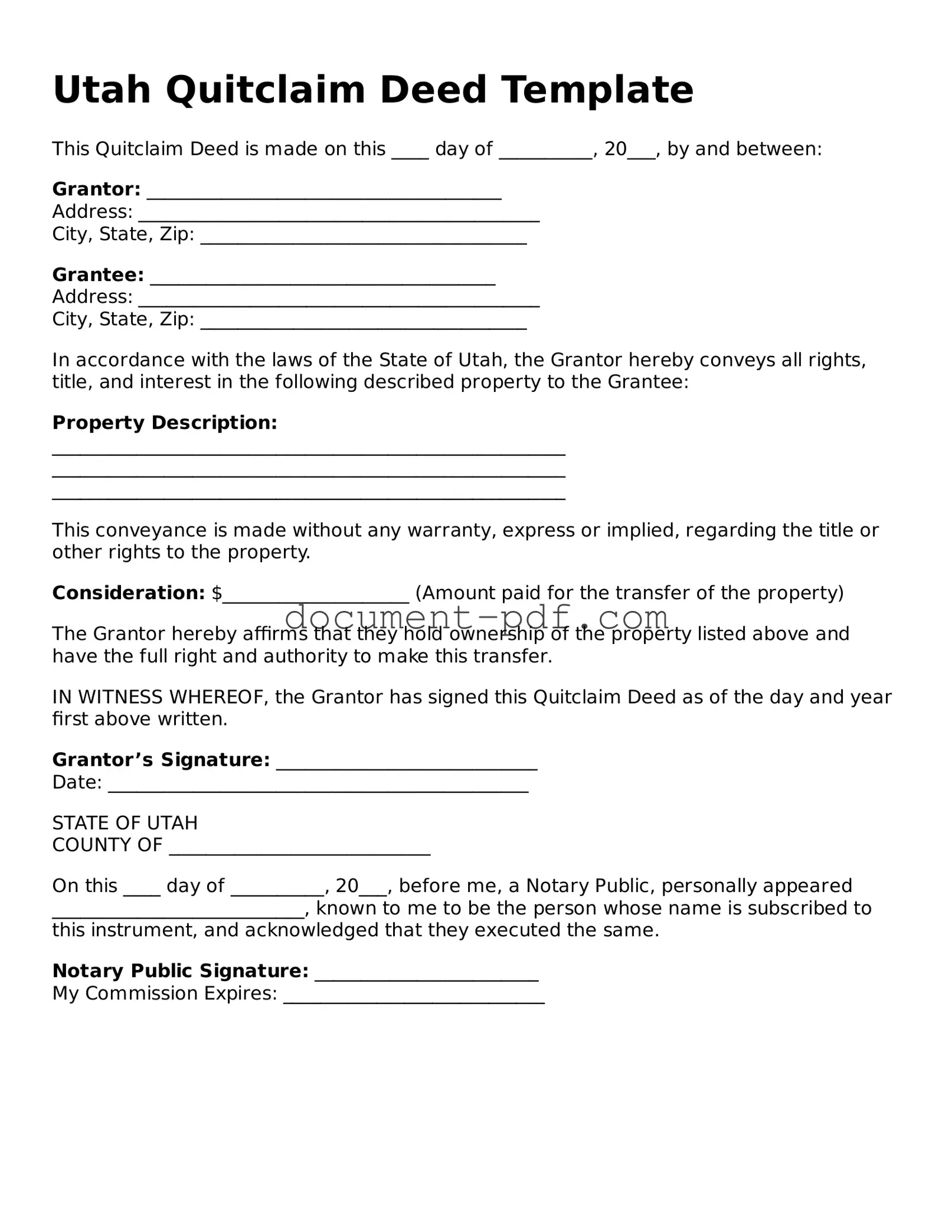Utah Quitclaim Deed Template
This Quitclaim Deed is made on this ____ day of __________, 20___, by and between:
Grantor: ______________________________________
Address: ___________________________________________
City, State, Zip: ___________________________________
Grantee: _____________________________________
Address: ___________________________________________
City, State, Zip: ___________________________________
In accordance with the laws of the State of Utah, the Grantor hereby conveys all rights, title, and interest in the following described property to the Grantee:
Property Description:
_______________________________________________________
_______________________________________________________
_______________________________________________________
This conveyance is made without any warranty, express or implied, regarding the title or other rights to the property.
Consideration: $____________________ (Amount paid for the transfer of the property)
The Grantor hereby affirms that they hold ownership of the property listed above and have the full right and authority to make this transfer.
IN WITNESS WHEREOF, the Grantor has signed this Quitclaim Deed as of the day and year first above written.
Grantor’s Signature: ____________________________
Date: _____________________________________________
STATE OF UTAH
COUNTY OF ____________________________
On this ____ day of __________, 20___, before me, a Notary Public, personally appeared ___________________________, known to me to be the person whose name is subscribed to this instrument, and acknowledged that they executed the same.
Notary Public Signature: ________________________
My Commission Expires: ____________________________
